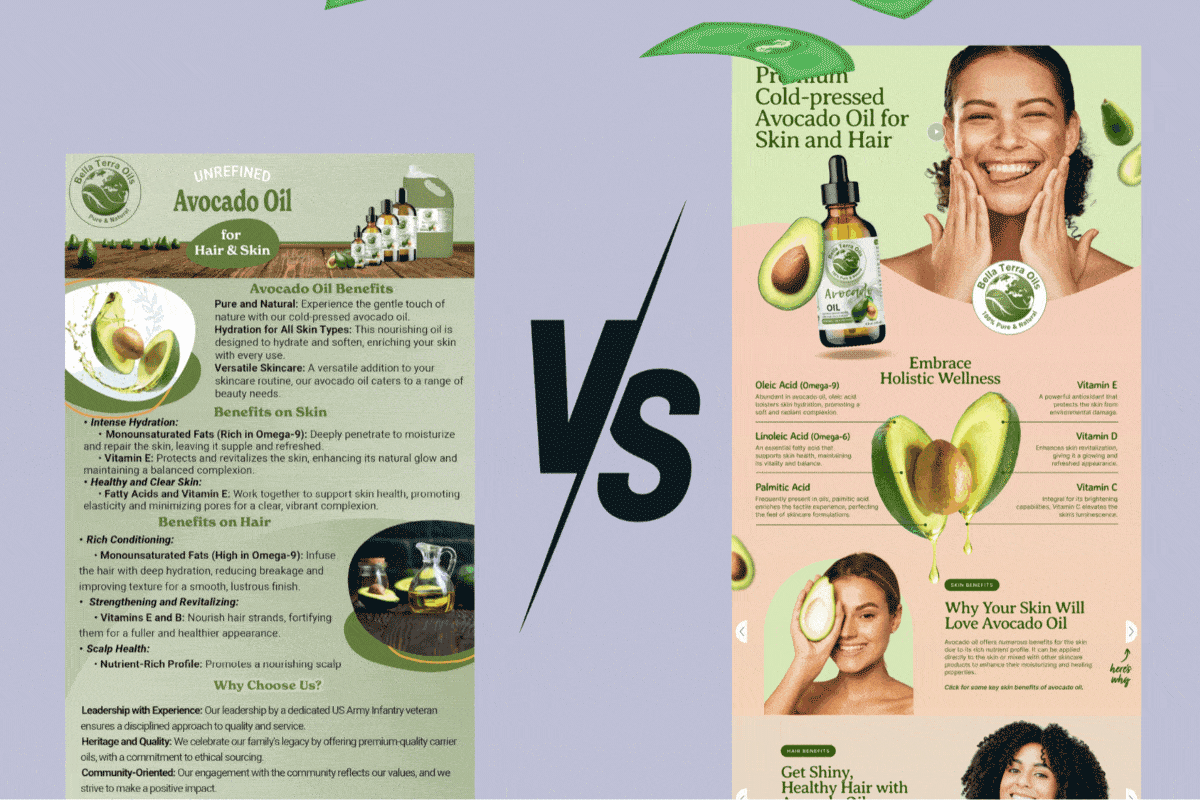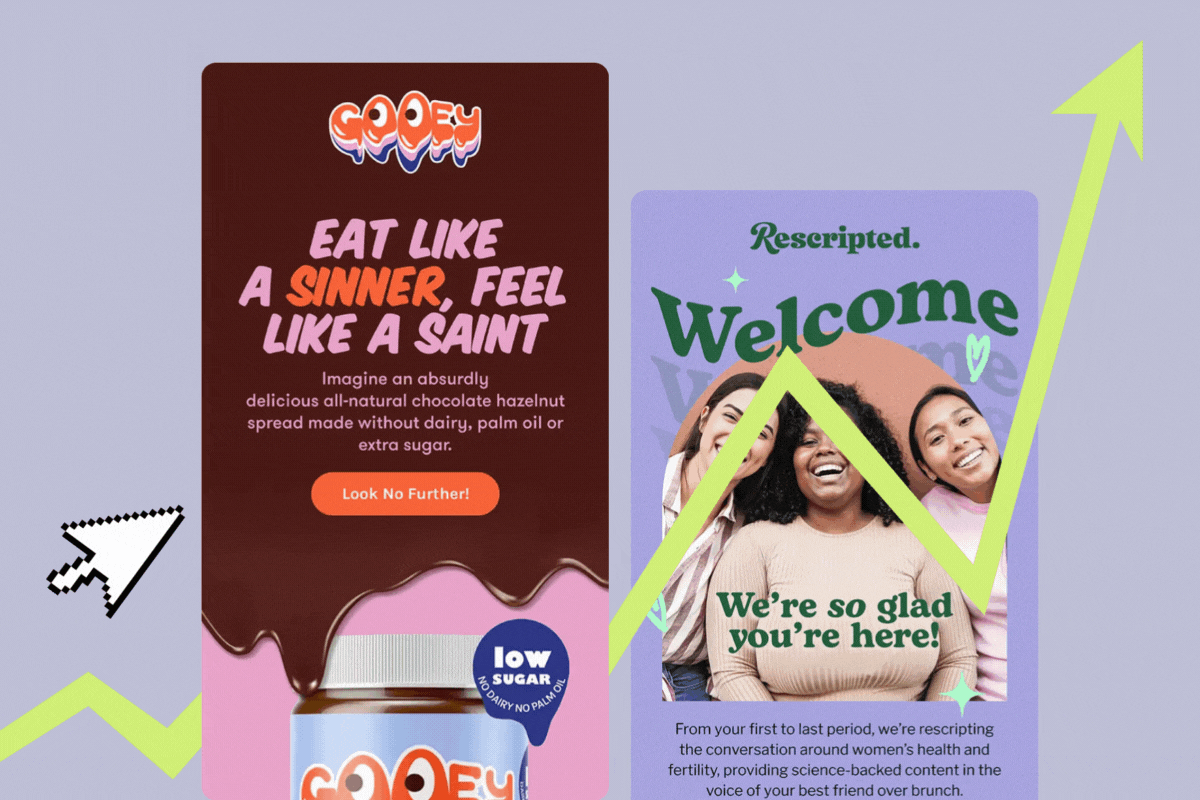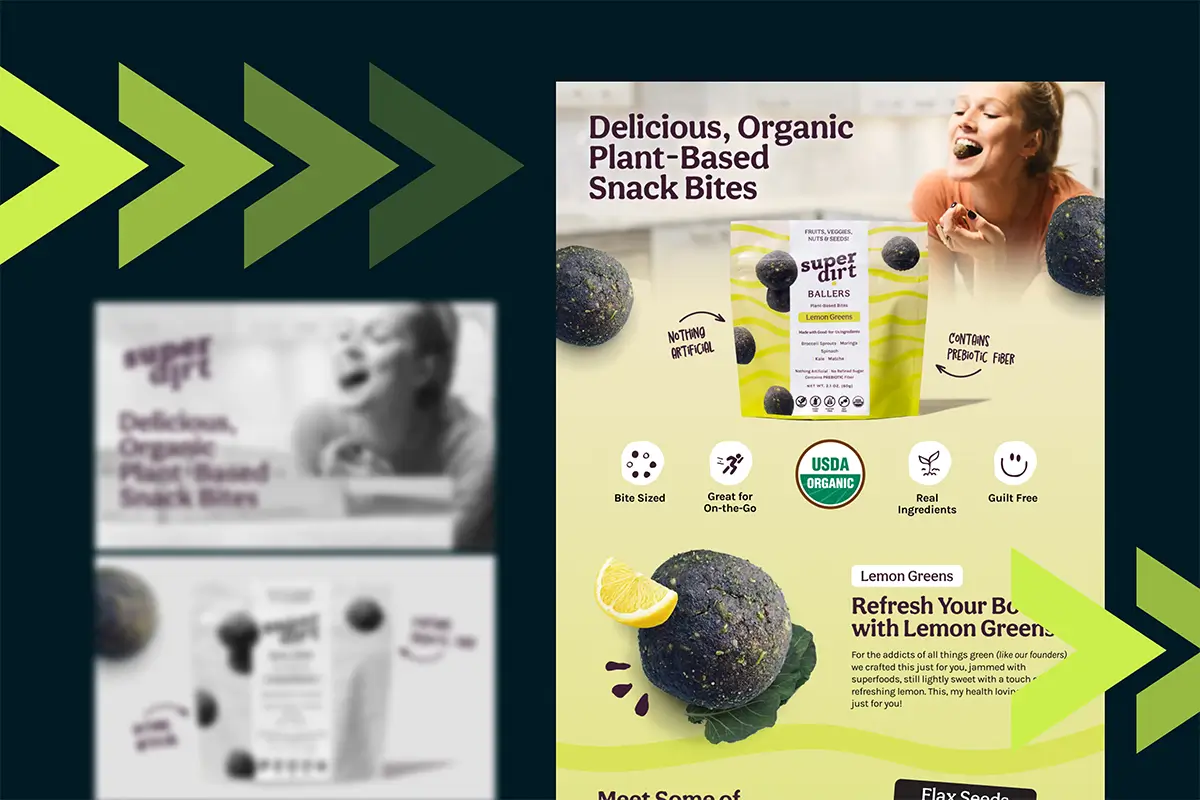As we all know, having a strong online presence is essential for success in today's ever-evolving digital world. And when it comes to e-commerce, there's no denying that Amazon reigns supreme. But with millions of products on the platform, how can you ensure that your listing stands out from the competition and drives sales?
When it comes to Amazon, having a well-optimized detail page is key to attracting potential customers and having them purchase your product. From eye-catching images to compelling product descriptions and persuasive reviews, every element of your detail page plays a pivotal role in increasing conversions.
By implementing the tips outlined below, you'll be well on your way to optimizing your Amazon detail page and increasing your sales in no time. So, let's dive in and unlock the potential of your Amazon business!
What is an Amazon Detail Page?

The Amazon product detail page is the page that customers see when they search for a specific item on Amazon. This page contains valuable information that customers seek before purchasing, including the brand name, logo, quantity, ASIN, product imagery, and other details.
The detail page not only communicates about your product but also creates brand awareness and offers solutions to the customers' problems.
The Benefits of a Good Amazon Detail Page
A well-crafted Amazon detail page offers numerous benefits, serving as a virtual storefront that enhances a product's visibility, builds brand credibility, and provides crucial information to potential customers.
A compelling detail page can improve search rankings, attract more traffic, and increase the likelihood of conversions. It acts as a powerful marketing tool, conveying the value and uniqueness of a product, ultimately contributing to a positive shopping experience and sustained success on Amazon.
Understanding Amazon's A9 Algorithm
Amazon's A9 algorithm serves as the virtual gatekeeper, deciding where your product stands in the bustling Amazon search results. If you want your product to shine, you've got to be besties with A9.
A9 considers various factors for ranking a product to determine which are most relevant and high-quality. These factors include keywords, sales, conversion rates, product titles, and even customer satisfaction.
One of the key things that Amazon's A9 looks for is relevance. This means your product needs to be closely aligned with the search terms that potential customers use. For example, if someone searches for "blue running shoes," your product listing needs to include those keywords and be relevant to that search. If Amazon doesn't know what you're selling, it will not rank you for the search term you want.
A9 also takes into account performance metrics, such as how many sales your product has had or how frequently it's viewed. This means having a strong sales history and good customer feedback is important. If customers regularly leave negative feedback or you get good impressions, but few people click or buy your product, A9 will consider that and may lower your product's ranking.
Now that you know the factors that go into it let's go into how we can get your detail page to perform better!
Optimize your Amazon Listings
Amazon detail page optimization is a strategic approach to driving success and staying ahead in the marketplace. Make optimization an ongoing part of your e-commerce business strategy with these tips.
1) Conduct Keyword Research
Keyword research is the foundation of any successful Amazon detail page optimization strategy. It entails identifying keywords and phrases that your target consumer uses to search for similar products.
Start by creating a list of relevant keywords directly associated with the product you're selling. Put yourself in your customers' shoes and think about what terms they would use to find your product. You can also use keyword research tools like Amazon's search bar or third-party tools like Keyword Tool, MerchantWords, or Jungle Scout to generate keyword ideas.
Once you have a list of potential keywords, assessing their search volume and competition is essential. Focus on keywords with relatively low competition and high search volume to increase the likelihood of ranking higher in search results.
Consider both long-tail and short-tail keywords in your strategy.
- Long-tail keywords are generally specific and often characterized by lower search volume and competition. However, they hold the potential for a higher conversion rate, as these keywords cater to customers who usually know what they're seeking.
- Short-tail keywords are broader searches with typically high search volume and heightened competition. Their conversion rates may be lower as customers often explore, considering various options.
Incorporate your selected keywords strategically throughout your detail page, including your product title, bullet points, and product description. However, do it naturally and avoid keyword stuffing because it can potentially negatively impact your search ranking and readability.
2) Optimize Your Product Title and Bullet Points
Your product title and bullet points are two of the most important elements of your Amazon detail page. They are the first things customers see, and they play a crucial role in capturing attention and conveying the unique selling points of your product. In fact, the product title (also known as the product name) stands as a key element employed by both Amazon and search engines to evaluate the relevance of a detail page in response to a customer's search.

Product Title
When crafting your product title, aim for a combination of relevant keywords and compelling language. Be concise, clear, and highlight your product's key features and benefits. Avoid excessive punctuation and unnecessary words that could dilute the effectiveness of your title.
In most categories, Amazon permits a product title length of 250 characters. However, many sellers opt to stay below 200 characters. Despite Amazon indicating a maximum of 250 characters, listings with titles exceeding 200 characters could potentially be suppressed.
The Amazon product title consists primarily of four details.
- Name of the product brand
- Color / Type / Variant (whatever applies to your product)
- Size of the product or quantity
- Primary keywords
If you're still unsure, you can check out Amazon's product title tips here.
Bullet Points or Key Features
Well-crafted bullet points contain keywords, prioritize clear communication, and assist customers in making purchase decisions. One effective approach is to begin with a unique selling point and follow up with the corresponding benefits.
In addition, keep all five bullet points under or around 1,000 characters in total, as this helps with readability.
For a clearer and more engaging read, let's consider the food pillow example. It becomes much easier to digest when it's concise, around 1,000 words, and the bullet points begin with a unique selling point expressed in all capital letters.

Unlike the above, the toy example here has bullet points that exceed well over 1000 characters and they are not separated by an all caps USP— making it harder to read.

Testing shows that well-crafted bullet points increase sales, so don't overlook this important section.
3) Write Compelling Product Descriptions
Seize the opportunity in your product description to offer in-depth details about your product, highlight its benefits, and proactively address any potential concerns or questions your customers might have.
Amazon allows for some basic formatting in your product descriptions to avoid one giant paragraph. Use bullet points, numbered lists, or different font weights to make reading easier. Since it utilizes HTML, there are many free description generators to help with that.
Frequently, you'll come across wordy and lengthy product descriptions. Many shoppers tend to avoid investing time in reading such long paragraphs.
Speaking of wordy, check out the product description below. It's a long paragraph that's not easy to digest. Would you even bother reading it?

The example below is a clear contrast to what you see above. The information is organized into sections with distinct paragraphs and font weights for easy readability.

Remember to include relevant keywords naturally throughout your product description. Prioritize readability and customer experience over keyword density because the title, bullet points, and backend search terms are given precedence over the description.
4) Utilize High-quality Product Images and Videos
Capturing the attention and interest of potential customers hinges on the visual appeal of your product. Incorporating high-quality product images and videos enables customers to envision your product, grasp its features, and make well-informed purchasing decisions.

Investing in professional product photography is a necessity to present your product most favorably. You'll want to capture various angles to offer a comprehensive view and incorporate lifestyle images illustrating your product in use or showcasing its benefits. Nowadays, numerous online platforms, such as Soona, provide convenient options for getting photography done, or you can have your product 3D rendered as well!
Once you have your new product imagery, explore the option of including infographics, comparison charts, and more to accentuate key features or specifications— I'm here to assist with that! These visual aids simplify the understanding of your product's unique selling points sets you apart from the competition.
5) Take Advantage of A+ or Premium A+ Content

Amazon A+ Content, formerly known as Enhanced Brand Content, is a feature that allows sellers and brand owners on Amazon to enhance their product detail pages with visually engaging and informative content. This feature enables the inclusion of enriched images, text placements, and a unique Brand Story.

By leveraging A+ Content, sellers have the opportunity to create a more immersive and persuasive shopping experience for customers, potentially leading to increased conversion rates, higher traffic, and improved overall sales performance. It serves as a valuable tool for brands looking to differentiate themselves and communicate their product's value more effectively on the Amazon platform.
6) Maximize Customer Reviews and Ratings
How often have you decided between two products based on their reviews?
I know I have!
Customer reviews and ratings serve as influential social proof that holds significant sway over purchasing decisions. Favorable reviews can establish trust and credibility, while unfavorable reviews can be real buzzkills and dissuade potential customers.
Customer Reviews Tool
Amazon has recently introduced the Customer Reviews Tool which allows brand owners to respond to customer reviews with three stars or less, offering courteous refunds or addressing concerns. It is important to respond to negative reviews professionally and promptly, demonstrating that you value customer feedback and are committed to addressing any issues that may arise.
To access, hover your cursor over the 'Brands' tab in Seller Central, select 'Build Your Brand,' and scroll down to locate the customer reviews option. Click on 'Get started with Brand Reviews' to access the tool.
Vine Review Program

If you're product is new and lacking reviews, Amazon's Vine Review Program invites trusted and influential reviewers, known as Vine Voices, to share their honest opinions about new and pre-release products. These individuals are chosen based on their demonstrated history of writing helpful and insightful reviews. Participating vendors provide products to these Vine Voices free of charge, and in return, the reviewers share their experiences through detailed feedback and reviews on the Amazon platform. The program aims to provide customers with reliable information from trusted sources while offering vendors an opportunity to generate early reviews for their products.
While you can't control the content of customer reviews, you can influence the overall sentiment by delivering a positive customer experience.
7) Implementing Backend Keywords and Search Terms
Amazon allows you to add backend keywords and search terms to improve your search visibility further. Backend keywords, although not visible to customers, are used by the A9 algorithm we discussed earlier to determine the relevance of your product.
When adding backend keywords, avoid using duplicate or irrelevant terms. Instead, include relevant keywords that couldn't fit naturally within your visible detail page elements.
Optimize the impact of your backend keywords by combining specific and broad terms. Consider adding variations of your main keywords, alternate spellings, synonyms, and related terms. This will increase the probability of your product appearing in a broader range of customer searches.

In order to add backend keywords in Amazon, follow these steps:
- Log in to your Seller Central account
- Go to the 'Inventory' drop-down, then selection 'Manage Inventory'
- Select the product you want to access and click 'Edit'
- Click on the 'Keywords' tab
- Input your backend keyword in the 'Search Terms' section and click on the yellow 'Save and Finish' button
Amazon Backend Keyword Dos
- DO stay within the 249 byte limit by being strategic with your keywords. Amazon enforces a character limit of 249 bytes (excluding spaces and punctuation) for search terms. There are free counters available to help you stay within the limit
- DO use different variations and synonyms of your keywords. Example: scented candle could also be fragrant candle
- DO separate your keywords by a single space, no need for punctuation
- DO get creative and find alternate ways to say your keyword. Example: water could also be h2o
- DO try and place your keywords in a coherent order. Example: try 'fitness health tracker' instead of 'tracker health fitness'
- DO use just keywords, No need to make it readable with stop words like 'by', 'and', 'a'— you get the idea
Amazon Backend Keyword Dont's
- DO NOT duplicate or repeat keywords that are used in your Product Title, Bullet Points, or Product Description
- DO NOT use both plural and singular. Example watches or watch— choose one
- DO NOT include any brand names
- DO NOT use offensive, abusive, or illegal terms
- DO NOT use temporary modifiers like 'new', 'on sale,' or subjective claims like 'cheapest,' 'best'
- DO NOT use special characters, punctuation, or capital letters
- DO NOT use irrelevant or misleading keywords
- DO NOT include ASINs or SKUs
Amazon and consumer behavior is ever-changing, so don't forget to regularly review and update your backend keywords based on customer search trends and performance data. Play around with different variations and monitor the impact on your search visibility.
8) Monitor Your Amazon Detail Page Performance
Optimizing your Amazon detail page is an ongoing process. It's important to continuously analyze and monitor your detail page's performance to identify improvement areas and make data-driven decisions. Here are a few key metrics to keep an eye on:
Conversion Rate: The percentage of visitors to your detail page who make a purchase. A low conversion rate could be indicative of issues with customer trust or product presentation.
Click-Through Rate (CTR): The percentage of customers who choose to click on your product after seeing it in search results. A low CTR may suggest your product title or images are not compelling enough to attract clicks.
Bounce Rate: The percentage of customers who leave your detail page without taking any action. A high bounce rate may indicate that your product description or images are not meeting customer expectations.
Sales and Revenue: Track your overall sales and revenue to assess the effectiveness of your optimization efforts. Look for trends and patterns to identify what strategies need improvement and which areas work.
Use third-party analytics tools to access and analyze this data, or you can use Amazon's Manage Your Experiments Tool to help drive an additional $15K in yearly sales, on average. Compare different product images, titles, and A+ Content to determine which performs better. Run A/B tests to see what content drives more sales.
Tailor your optimization strategies based on the insights gathered, and continue to refine your detail page to maximize your sales potential!
Taking Your Amazon Sales to the Next Level
As we wrap up this crash course on turning your Amazon detail page into a sales powerhouse, remember: your product deserves the digital red carpet treatment. Sprinkle those keywords like confetti, let your product description strut its stuff, and throw in some eye-catching visuals— because, let's face it, we're all online window shoppers at heart.
Remember, the journey to Amazon domination is dynamic and ongoing; optimization is key to staying ahead. Now, armed with the tips and tricks for Amazon success, go forth and turn those clicks into a symphony of cha-chings. May your sales be sky-high and your reviews even higher. Happy selling!
Looking for an Amazon Design Expert?
Need to add a bit of "je ne sais quoi" to your Amazon listings? Look no further - an expert is here!
get started









Lorem ipsum dolor sit amet, consectetur adipiscing elit. Suspendisse varius enim in eros elementum tristique. Duis cursus, mi quis viverra.